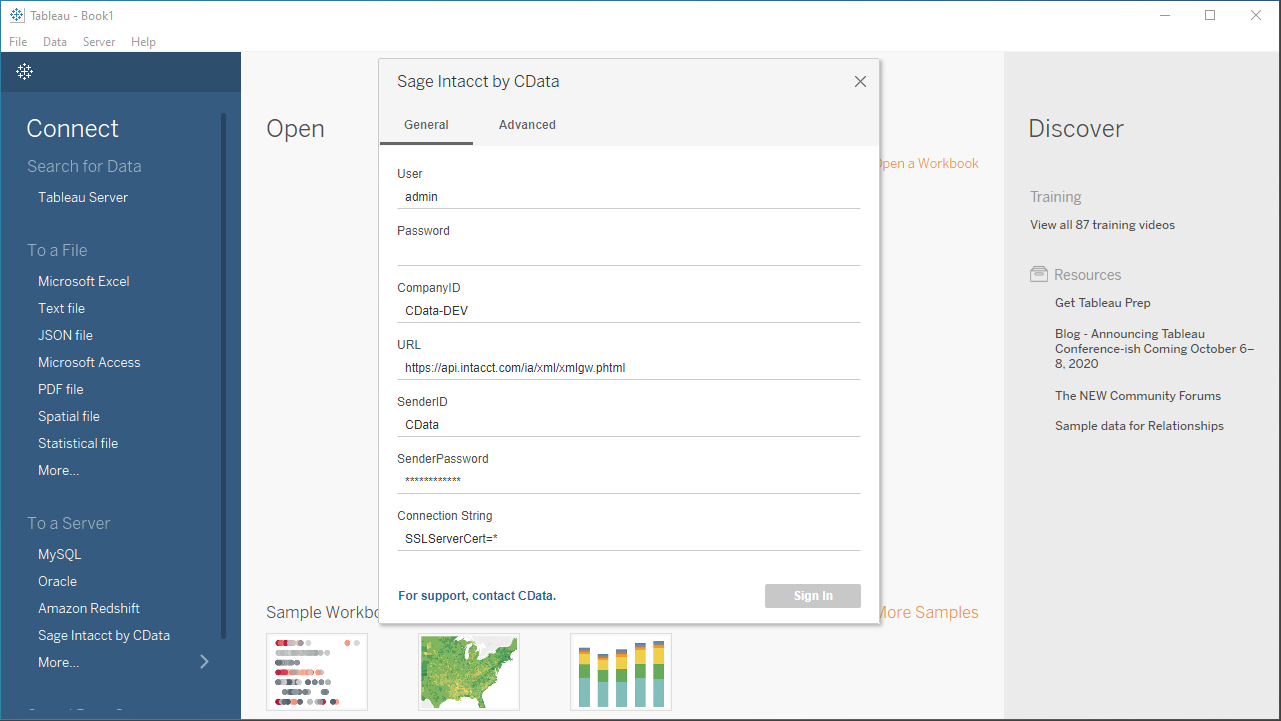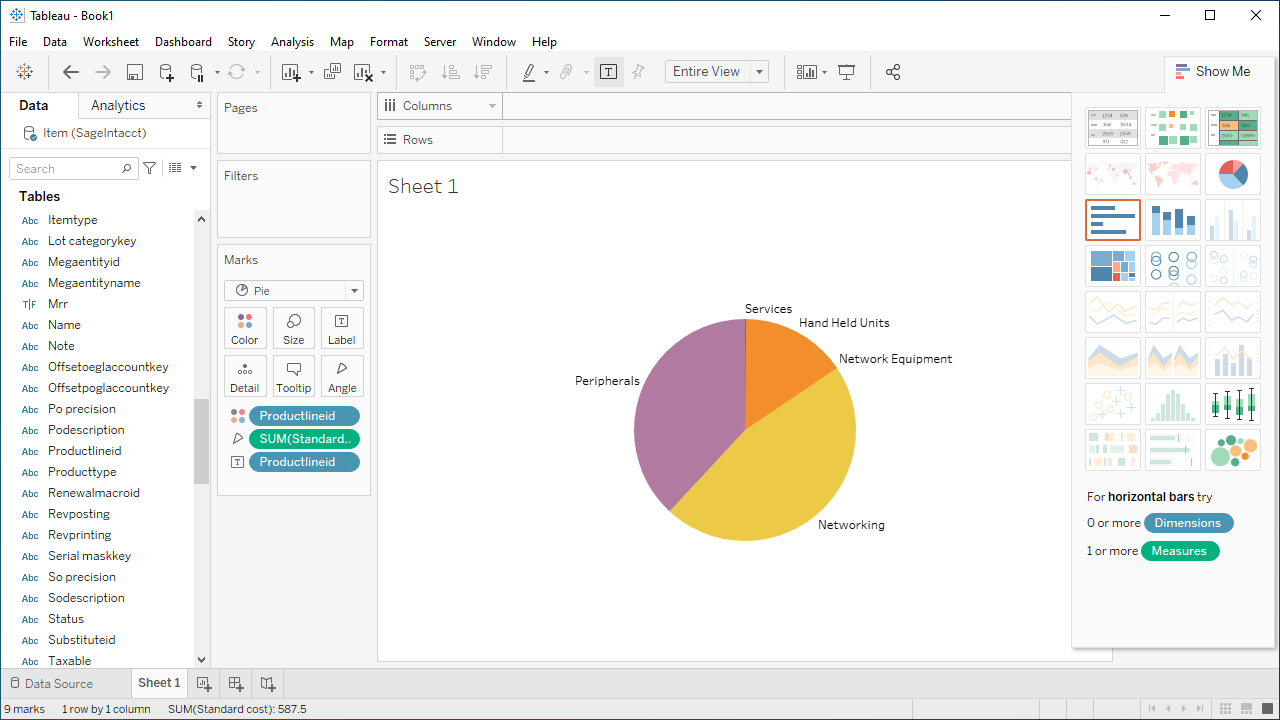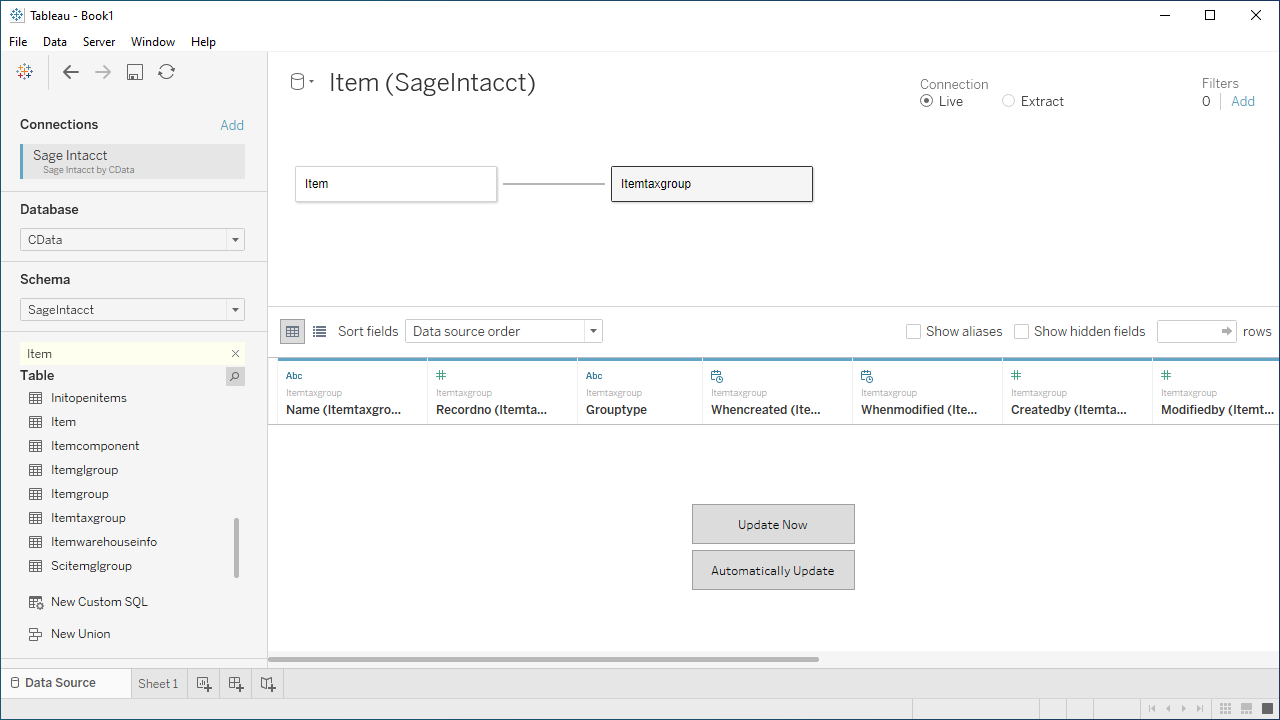Discover how a bimodal integration strategy can address the major data management challenges facing your organization today.
Get the Report →Visualize Live AlloyDB Data in Tableau
Use CData Tableau Connectors and Tableau Desktop to visualize live AlloyDB data.
Tableau is a visual analytics platform transforming the way businesses use data to solve problems. When paired with the CData Tableau Connector for AlloyDB, you can easily get access to live AlloyDB data within Tableau. This article shows how to connect to AlloyDB in Tableau and build a simple chart.
The CData Tableau Connectors enable high-speed access to live AlloyDB data in Tableau. Once you install the connector, you simply authenticate with AlloyDB and you can immediately start building responsive, dynamic visualizations and dashboards. By surfacing AlloyDB data using native Tableau data types and handling complex filters, aggregations, & other operations automatically, CData Tableau Connectors grant seamless access to AlloyDB data.
NOTE: The CData Tableau Connectors require Tableau 2020.3 or higher. If you are using an older version of Tableau, you will need to use the CData Tableau Connector for AlloyDB. If you wish to connect to AlloyDB data in Tableau Cloud, you will need to use CData Connect Cloud.
Connect to AlloyDB in Tableau
Open Tableau and click More under Connect -> To a Server. Select "AlloyDB by CData," then configure the connection and click "Sign In."
The following connection properties are usually required in order to connect to AlloyDB.
- Server: The host name or IP of the server hosting the AlloyDB database.
- User: The user which will be used to authenticate with the AlloyDB server.
- Password: The password which will be used to authenticate with the AlloyDB server.
You can also optionally set the following:
- Database: The database to connect to when connecting to the AlloyDB Server. If this is not set, the user's default database will be used.
- Port: The port of the server hosting the AlloyDB database. This property is set to 5432 by default.
Authenticating with Standard Authentication
Standard authentication (using the user/password combination supplied earlier) is the default form of authentication.
No further action is required to leverage Standard Authentication to connect.
Authenticating with pg_hba.conf Auth Schemes
There are additional methods of authentication available which must be enabled in the pg_hba.conf file on the AlloyDB server.
Find instructions about authentication setup on the AlloyDB Server here.
Authenticating with MD5 Authentication
This authentication method must be enabled by setting the auth-method in the pg_hba.conf file to md5.
Authenticating with SASL Authentication
This authentication method must be enabled by setting the auth-method in the pg_hba.conf file to scram-sha-256.
Authenticating with Kerberos
The authentication with Kerberos is initiated by AlloyDB Server when the ∏ is trying to connect to it. You should set up Kerberos on the AlloyDB Server to activate this authentication method. Once you have Kerberos authentication set up on the AlloyDB Server, see the Kerberos section of the help documentation for details on how to authenticate with Kerberos.

Discover Schemas and Query Data
- Select CData from the Database pull-down menu.
- Select AlloyDB from the Schema pull-down menu.
- Drag the tables and views you wish to visualize onto the join area. You can include multiple tables.
![Selecting table(s)]()
- Select Update Now or Automatically Update. Update Now lets you preview the first 10,000 rows of the data source (or enter the number of rows you want to see in the Rows text box). Automatically Update automatically reflects the changes in the preview area.
- Click the tab for your worksheet. Columns are listed as Dimensions and Measures, depending on the data type. The CData Tableau Connector discovers data types automatically, allowing you to leverage the powerful data processing and visualization features of Tableau.
- Drag a field from the Dimensions or Measures area to Rows or Columns. Tableau creates column or row headers.
- Select one of the chart types from the Show Me tab. Tableau displays the chart type that you selected.

Using the CData Tableau Connector for AlloyDB with Tableau, you can easily create robust visualizations and reports on AlloyDB data. Download a free, 30-day trial and get started today.







